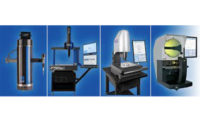It’s said that our imagination is what separates us from other animals. The ability to take what we imagine and make it real—to create something from nothing—is genius. Using said genius, countless storytellers have painted a vision of our potential future. Those stories that stand the test of time afford us a unique opportunity—to match the vision to reality.
In 1948, George Orwell wrote a bleak tale of the world thirty-six years in the future. If you are familiar, or just decided to do the math, you will know I’m describing the novel 1984. While we would admit that the story did not manifest into reality—at least not in its entirety—the portrayal of its dystopian future has lasted, most notably in the idea that people still often refer to “Big Brother” as a euphemism for a government or institution that grows too large and dominant over a society.
Orwell’s is not the only story to imagine future events. In fact two separate predictive stories might be of interest to baseball fans, particular on the north side of Chicago. In the late 1980s, the sequel to the blockbuster movie, Back to the Future, followed its characters into 2015, where they discover that the Chicago Cubs had won the World Series. Not quite.
In 2014, the final season of the television show Parks and Recreation, writers sent their characters three years into the future. Again, if you’re doing the math, 2017. These characters have a matter of fact discussion in downtown Chicago expressing that the town is much happier since the Cubs won the World Series. Ding ding ding! (For those unfamiliar, the Chicago Cubs won the World Series in fall of 2016, ending a 71-year drought without a championship.)
Probably the most frequent comparing and contrasting of the imagined future with the attained future is in its technology. Fans of Star Trek often talk of the communicators used on the original show in the early 1970s are a dead ringer for the Motorola Razr flip-phone, introduced in 2004, which became the best-selling phone in the world at the time.
But probably the most prolific examples of imaginary technology coming to fruition comes from a cartoon called The Jetsons, which premiered in 1962. Sixty years later, many of the “make-believe,” futuristic items used by this fictional family are a reality…for the most part. The family had a dog treadmill, talking alarm clocks, flat-screen TVs, watches that received phone calls, video chat, drones, robot vacuum cleaners, and digital newspapers. Unheard of in 1962, a reality in 2022. (Just look at how you are reading this column!)
Other technology seen in The Jetsons may not be a reality, but it’s in the works. Pillcams and robot maids. Many even liken the rise of 3D printing with the possibility of the most memorable piece of technology from The Jetsons: a fully prepared meal at the push of a button.
While we may not have the ability, or the time, to fully predict the future, we can keep abreast of the technology and processes that can help us shape that future. So, check out our Automation Supplement and everything else we have to offer in this month’s Quality.
Enjoy and thanks for reading!




